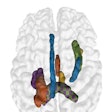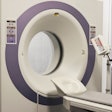Tuesday, December 2 | 11:30 a.m.-11:40 a.m. | SSG07-07 | Room S402AB
In this presentation, a team from Massachusetts General Hospital will delve into the value of minimum intensity projection (MIP) reconstruction for detecting hepatic lesions on hepatobiliary phase imaging.With the increasing popularity of hepatobiliary contrast agents, liver MRI is increasingly being utilized in the detection of metastases, frequently as a qualifier for surgical removal of metastases, said presenter Dr. Sheela Agarwal.
"With this in mind, it is even more essential to detect all lesions, even tiny ones," she told AuntMinnie.com. "So we decided to evaluate the added value of minimal intensity projection images in this process, given the proven benefit in detection of lung nodules."
In testing, the researchers found that the MIP images -- created using PACS postprocessing software from Agfa HealthCare -- did indeed lead to the detection of more liver lesions than standard hepatobiliary-phase imaging.
"However, it took the radiologists equally as long to evaluate these images as the raw images, even though there are fewer slices," she said. "This may be due to unfamiliarity with the appearance of [MIP images]."




















